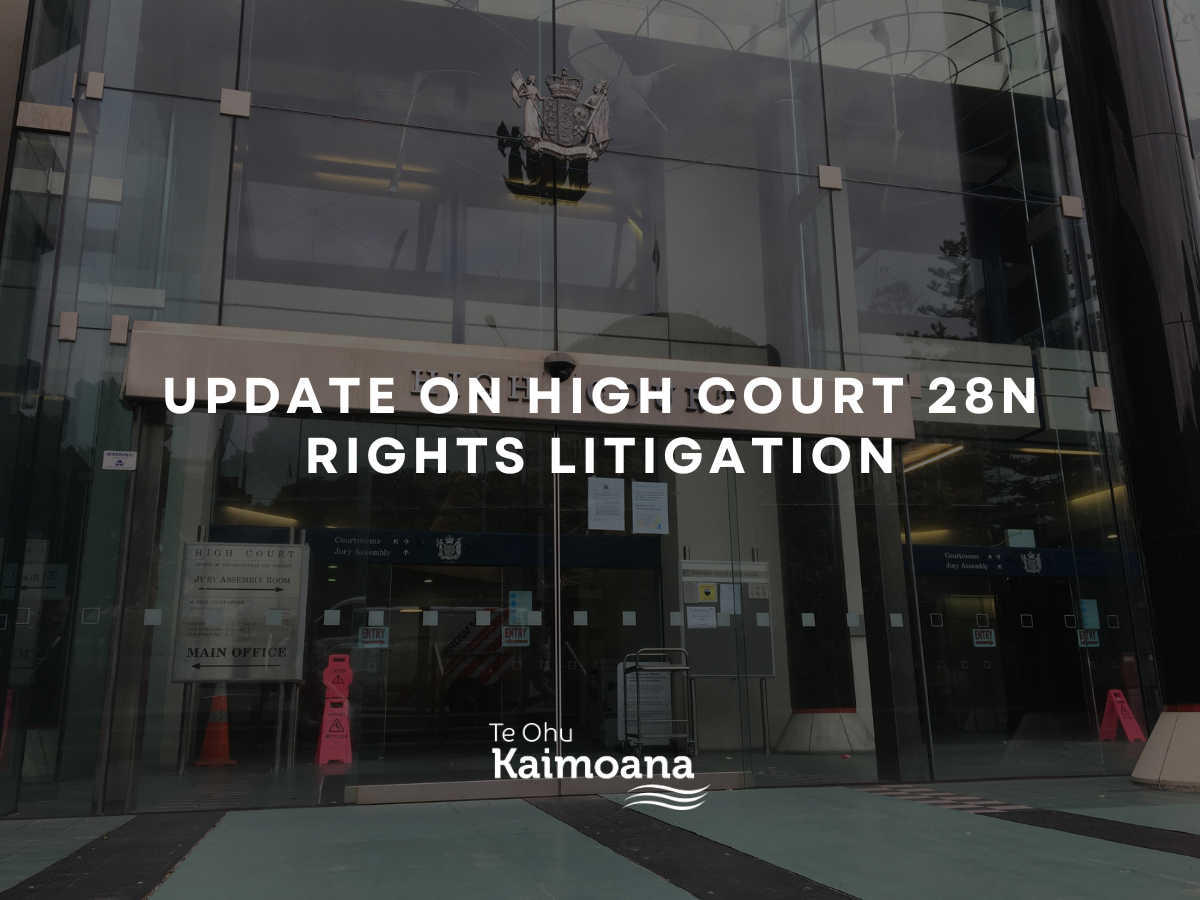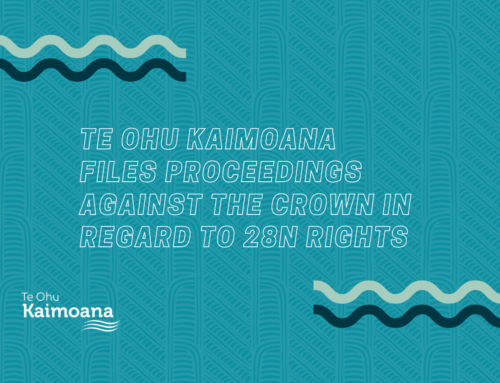
Background
As you may recall, in October of 2023 Te Ohu Kaimoana filed a declaratory judgment proceeding against the Crown (Attorney General) to address its failing under the Fisheries Settlement and Te Tiriti o Waitangi to address the 28N rights issue.
Since then, Te Ohu Kaimoana has had hearings in the Wellington High Court in July, and subsequently applied for interim orders to protect potential loss of settlement quota as a result of the Minister for Oceans and Fisheries upcoming decision to potentially increase the Snapper 8 quota management area (SNA8) total allowable commercial catch (TACC). This pānui provides you with an update on this activity, and a refresher on what the 28N rights issue involves.
What is the 28N rights issue?
The relevant section is section 23 of the Fisheries Act 1996. The rights that section recognises date back to section 28N of the Fisheries Act 1983, which was among the suite of provisions that established the QMS in 1986 (hence the reference to “28N rights”). Section 23 of today’s Act recognises a commitment the Crown made in 1986 to compensate fishing operators whose yields fell when the new regime required them to reduce their catches and fish sustainably. However, in the early 2000s it became apparent that through these legislative changes, the Crown had established a system that was gradually taking back settlement quota in a number of the 1989 fish stocks. Te Ohu Kaimoana refers to this as the ‘28N rights anomaly’. The anomaly affects only some of the 10% settlement quota promised in the 1989 interim settlement.
For further information on 28N rights, please visit our webpage dedicated to this kaupapa. High Court documents, such as Te Ohu Kaimoana’s statement of claim are available here.
Our case against the Crown – seeking declaratory judgement
The proceeding, filed at the High Court, claims that loss of settlement quota through 28N rights amounts to confiscation, and seeks a declaration that the Crown is in breach of the Fisheries Settlement. The hearing into our substantive case took place in the High Court in July. Te Ohu Kaimoana now waits for the decision on the declaratory judgment proceedings.
Following the hearing week in July, we asked the Crown to work with us to find a way to protect the SNA8 settlement quota while allowing the TACC increase to go ahead this year (assuming the Minister would decide to increase the TACC), but the Crown declined to engage with us. This led to us filing an application for interim orders against the Crown.
About the application for interim orders
As a result of the Crown’s refusal to work with us, we filed an application for interim orders asking the Court to direct the Crown not to take any steps that would result in the loss of settlement quota, without putting protections in place to ensure the settlement quota isn’t permanently lost before the Court decides on Te Ohu Kaimoana’s substantive claim.
High Court declined interim orders but sent strong warning to the Crown
On 4 September the High Court issued its judgment on our interim orders application. The Court “with some regret” declined our application for interim orders, primarily because of concerns about the impact on the industry and the economy if the foreshadowed SNA8 TACC increase was delayed.
The Judge however made some strong statements about our case and the Crown’s conduct.
- The Court observed that “any increase in the SNA8 TACC will result in the permanent loss, without compensation, of quota shares Māori received as part of the settlement” [paragraph 6].
- The Court acknowledged that if it finds that the Crown is in breach of the Settlement, then redress will need to be addressed, recording that “the breach, if there is one, has been going on for more than 30 years. If Te Ohu’s case is ultimately successful, [counsel for the Crown] is right to note that a comprehensive response will be required. There will be much to put right, including any further losses that occur between now and final resolution of the claim” [paragraph 80].
- The Court “regard the merits of Te Ohu’s case as strong. While I have not yet reached a final view, Te Ohu has argued persuasively that the gradual repossession of settlement assets is incompatible with an agreement designed to meet the Crown’s obligations under the Treaty, and to provide Māori with a lasting stake in New Zealand’s commercial fisheries” [paragraph 75].
- The Court also put the Crown “on notice” regarding the very real possibility that Te Ohu Kaimoana’s substantive case may succeed. “It would be unwise for the Crown to ignore the possibility Te Ohu Kaimoana will ultimately be successful. Te Ohu has presented a very strong case. It follows that the Crown should at least be alert to the possibility of a declaration that the progressive loss of settlement quota breaches both the settlement and the Treaty, in a way which has resulted in long-term unfairness and harm to Māori. If that declaration is eventually made, [counsel for Te Ohu Kaimoana] is right to note that every fresh redemption of 28N rights will compound the breach” [paragraph 84].
While the above observations from the Court provide helpful clarity on the Court’s direction of thinking regarding our substantive case, Te Ohu Kaimoana remains disappointed that Māori stand to lose a substantial, and valuable, block of their settlement quota if the Minister ignores the comments from the Court and increases the SNA8 TACC without putting protections in place to preserve the settlement quota. Depending on the size of the increase the Minister selects, Māori stand to lose between 20 and 29 per cent of SNA8 settlement quota through the operation of 28N rights unless protections are put in place. This will compound the harm Maori have sustained since we first began losing settlement quota through the operation of 28N rights in the 1990s.
Te Ohu Kaimoana is now awaiting the High Court’s decision on its substantive case. If you have any questions or comments, please contact our General Counsel Brianna Boxall via email at: brianna.boxall@teohu.māori.nz

